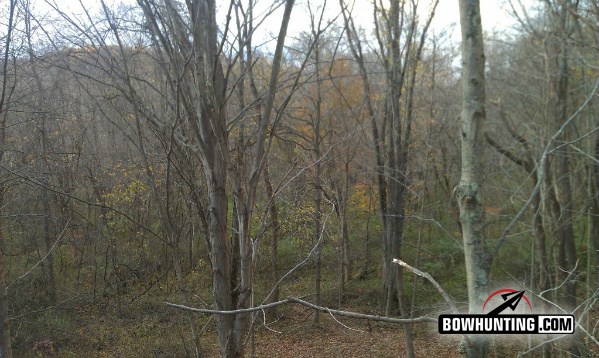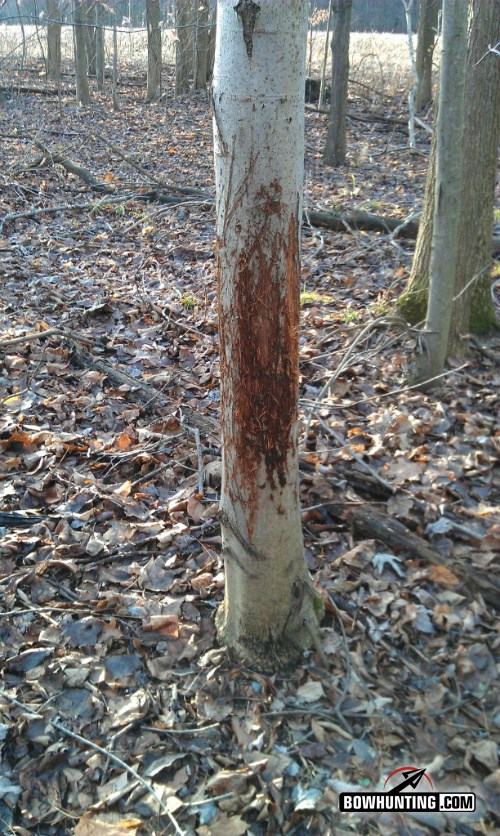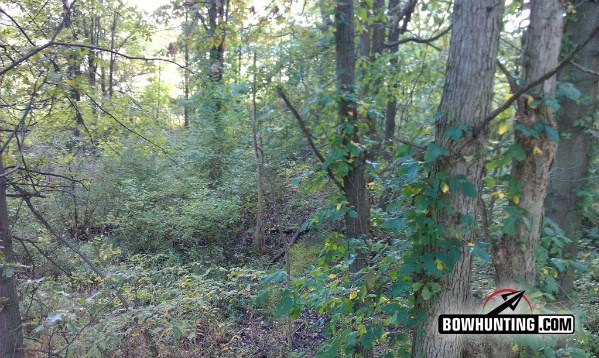LAST UPDATED: May 8th, 2015
The title of this blog, “Five steps to early season big buck success” may at first sound like something that I should have waited to post until Summer… But the fact is, the track to early season big buck success starts… Now! Hunting seasons for the most part are over, there is no time better than now to get into the timber and learn how the deer are using the properties you hunt. I am a firm believer of no in-season scouting on foot because I want to leave as little disturbance on the lands I hunt as possible. With that said, 90% of my boot leather scouting is done between the months of January and April.
1. Lace up your boots, put on your brush pants and cover the deer bedding areas from all directions. Locate the buck beds within these areas. Clues to tip you off that it is a buck bed: Single beds are usually buck beds, does and fawns tend to bed in groups. Beds that are surrounded by rubs and or scrapes generally are buck beds. Some people may have a hard time believing this one, however beds that offer a great vantage point are big buck bed hot-spots. While their nose is their number one defense, they use their eyes and ears just as much to detect and avoid danger.
Bedding and security cover areas rarely offers trees suitable for a climber.
2. Learn your lands and understand their strengths and weaknesses and how your properties relate to surrounding tracts. This is very important, some properties may be bursting at the seams during certain periods of the year and nearly devoid of deer at others. Find the features of your properties that are favorable to whitetail and understand what time of the year the deer with be using the favorable traits.
3. Locate target animals by utilizing trail cameras and by glassing fields in the evenings from late spring until your season opens. I set my Stealth cameras up in low impact areas such as field edges. I do not care that I am mostly getting night time photos as I am by no means attempting to “pattern” the bucks, I am only using the Stealth cam to confirm if there are bucks I am interested in hunting on that tract of land. Sometimes a buck you have been watching for a while disappears or a new stud seems to just appear one day, this is because as Summer starts the transition to Autumn some bucks leave the areas they spent their summer on to return to their fall home range. This isn’t as common with older bucks as it is with younger bucks but it does take place.
While taking this photo I am standing between a bedding area and a food source.
4. Understand what the deer are feeding on on the properties you hunt or the adjacent properties throughout the fall. Their preferred food sources change often, from soy beans to acorns to corn etc. Learn what they are eating and when they are doing so.
5. The final step is where all of your work comes together and produces results. Here you take the things you know or learned: buck beds, the strengths of your properties, food sources and any other things you learned along the way and create your game plans. Each day and hunt is unique based on the days weather conditions, preferred food sources and time of year. Now that you know you are on a property holding a buck you are interested in, know where he beds, understand the strengths of your property and what he is feeding on you can formulate solid plans for each hunt.
In my experiences the best tactic to use is to get between his bed and his preferred food source, setting up as close as possible to his bed. The further you are setup away from his bedding site the greater your odds decrease of seeing him during daylight hours. To get onto big early season bucks during daylight hours you have to be setup in an area that he is comfortable using during the day time. Heavy ground cover (I call it security cover) are areas that the bucks will leave their beds for and feel secure to use to browse, socialize with other deer and make rubs and scrapes while waiting until dark to make his way to the open agriculture fields. This “security cover” is generally the outer laying areas of his primary bedding area. Stationary setups are not favorable to this style of hunting. You need to be able to move and hunt different areas and properties each and every hunt. Hunting these bedding areas generally puts you in spindly or cluster style trees. A lock on and sticks such as my go to setup, the Lone Wolf assault and sticks are a must.
This photo shows security cover with white oak trees present, a perfect ambush point for big early season bucks!








